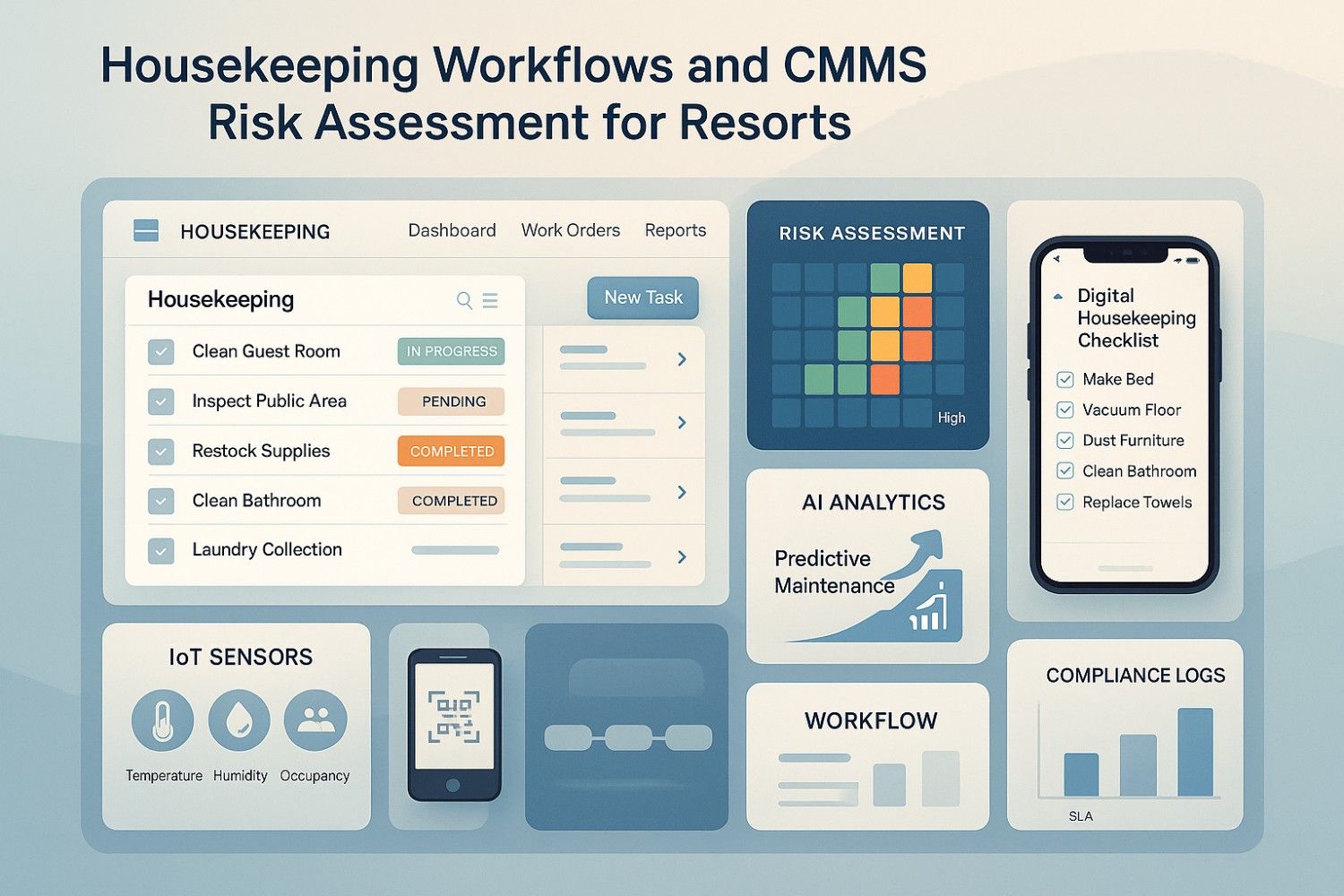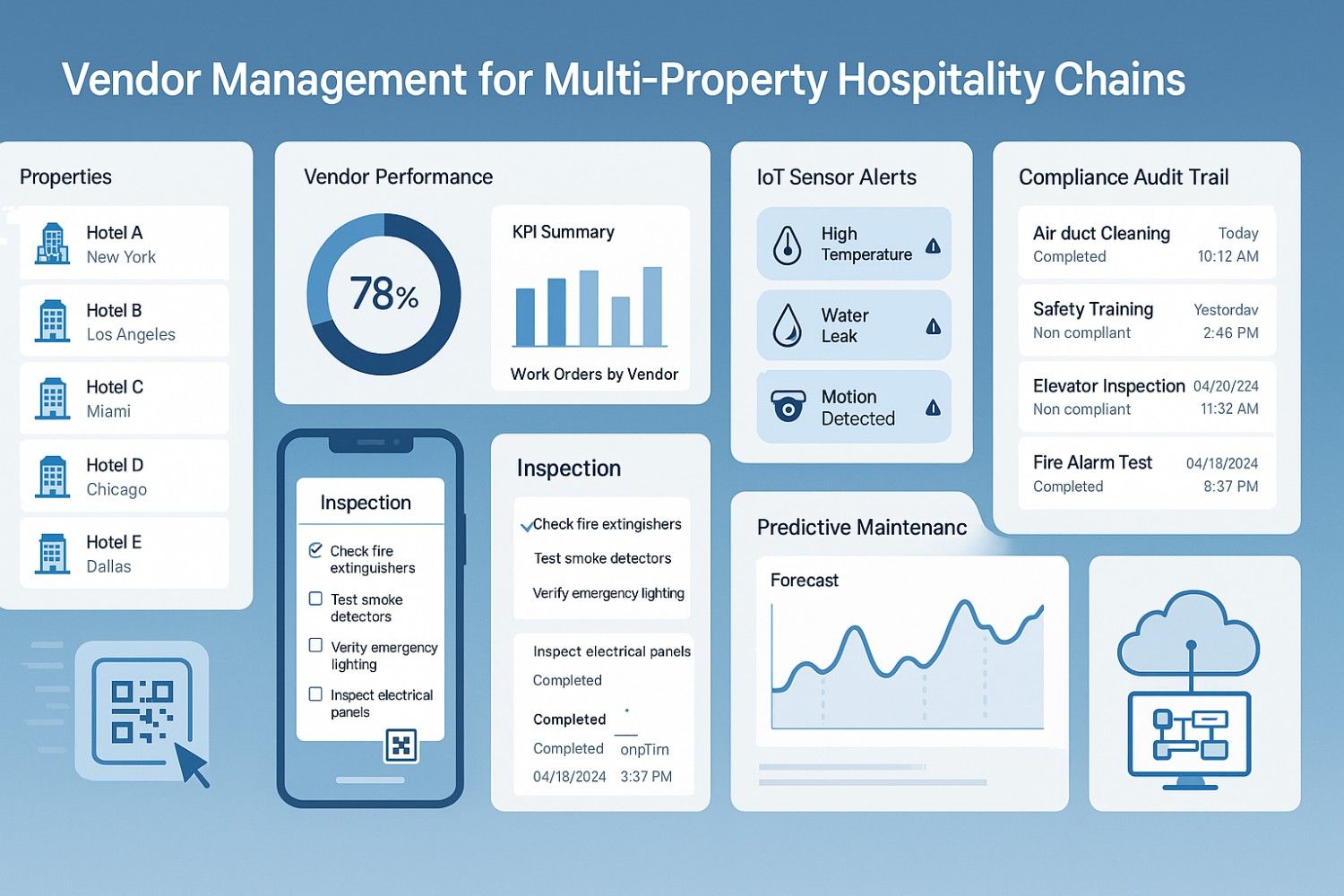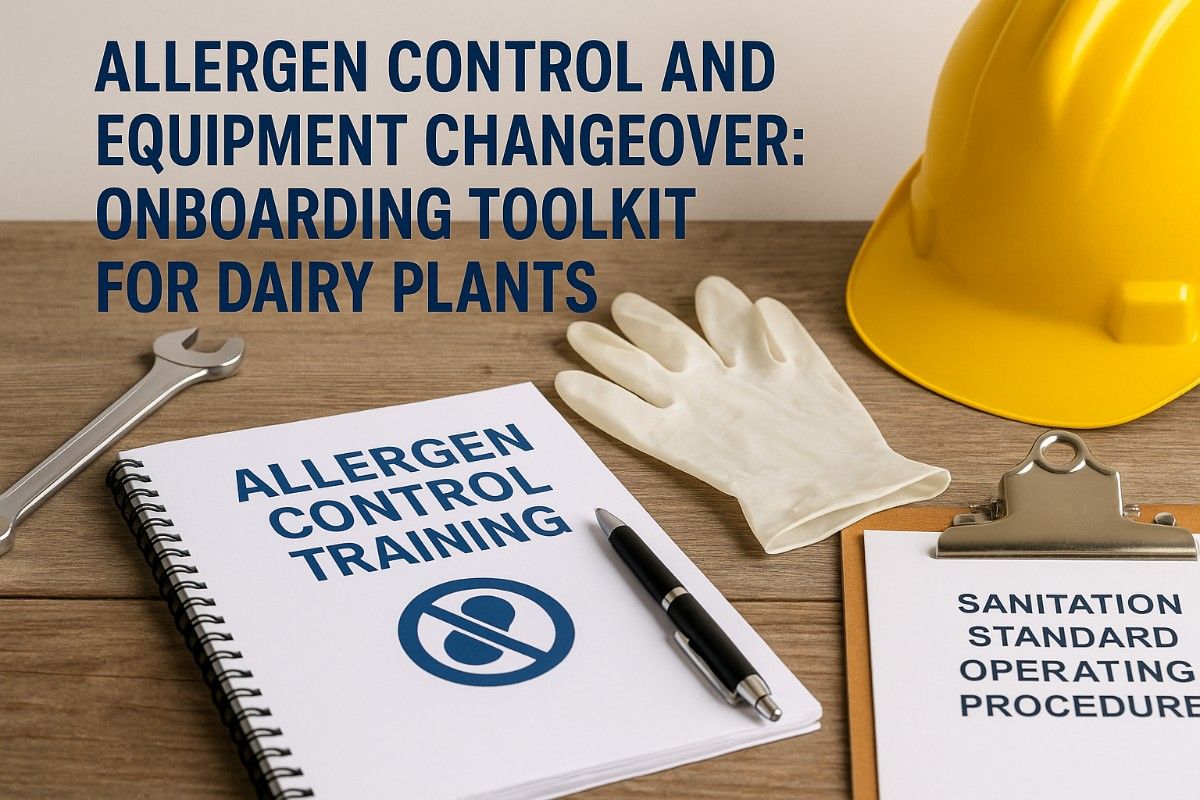In today's healthcare environment, effective healthcare preventive maintenance programs are essential for ensuring patient safety, regulatory compliance, and cost control. With medical equipment representing 10-15% of a hospital's total capital investment and maintenance costs averaging 6-10% of equipment value annually, implementing strategic medical equipment maintenance programs can deliver substantial cost savings while improving patient outcomes. Modern healthcare facilities managing thousands of medical devices—from life-support systems to diagnostic imaging equipment—require sophisticated healthcare maintenance management approaches that balance regulatory requirements, patient safety, and operational efficiency. This comprehensive guide examines proven strategies for hospital maintenance optimization, regulatory compliance, and cost reduction that can help healthcare organizations achieve up to 30% savings in maintenance expenses while enhancing equipment reliability and patient care quality.
Understanding Healthcare Preventive Maintenance
Healthcare preventive maintenance encompasses all planned activities designed to maintain medical equipment in optimal condition, prevent failures, and ensure patient safety. Unlike general industrial maintenance, medical equipment maintenance requires specialized knowledge, regulatory compliance, and risk-based prioritization.
Types of Healthcare Maintenance
1. Regulatory Preventive Maintenance
Maintenance required by regulatory bodies such as The Joint Commission, FDA, and CMS:
- Safety Testing: Electrical safety testing for all medical devices
- Performance Verification: Regular calibration and performance checks
- Documentation Requirements: Comprehensive maintenance records and audit trails
- Compliance Reporting: Regular submission of maintenance and safety data
- Risk Assessment: Ongoing evaluation of equipment safety and performance
2. Manufacturer-Recommended Maintenance
Maintenance protocols specified by medical device manufacturers:
- Scheduled Inspections: Regular equipment checks per manufacturer specifications
- Component Replacement: Preventive replacement of wear items and consumables
- Software Updates: Installation of critical software patches and upgrades
- Calibration Services: Precision adjustments to maintain accuracy
- Warranty Compliance: Maintenance activities required to maintain warranty coverage
3. Risk-Based Maintenance
Maintenance prioritized by equipment criticality and patient safety impact:
- Life-Support Equipment: Highest priority with redundant safety checks
- Critical Diagnostic Equipment: Equipment essential for patient diagnosis
- Therapeutic Equipment: Devices used in direct patient treatment
- Monitoring Equipment: Systems for continuous patient observation
- Support Equipment: Infrastructure supporting medical operations
Cost Reduction Potential by Maintenance Type
- Preventive vs Reactive Maintenance: 40-60% cost reduction
- Planned vs Emergency Repairs: 50-70% savings on labor and parts
- In-House vs Contract Services: 20-35% savings on routine maintenance
- Predictive Maintenance: 25-40% reduction in total maintenance costs
- Inventory Optimization: 15-25% reduction in parts inventory costs
Medical Equipment Maintenance Categories
Effective medical device maintenance requires understanding different equipment categories and their specific maintenance requirements, risk levels, and regulatory obligations.
Critical Medical Equipment Categories
Life-Support Systems
Risk Level: Critical
Maintenance Frequency: Daily to Weekly
- Ventilators and respirators
- Defibrillators and AEDs
- Infusion pumps and syringe pumps
- Patient monitors and telemetry
- Anesthesia machines
- ECMO and dialysis equipment
Cost Impact: Downtime costs $25,000-$100,000 per incident
Diagnostic Imaging Equipment
Risk Level: High
Maintenance Frequency: Weekly to Monthly
- MRI and CT scanners
- X-ray and mammography systems
- Ultrasound machines
- Nuclear medicine equipment
- Fluoroscopy systems
- PACS and imaging networks
Cost Impact: Service costs $15,000-$50,000 per breakdown
Laboratory Equipment
Risk Level: Medium-High
Maintenance Frequency: Monthly to Quarterly
- Clinical chemistry analyzers
- Hematology and coagulation systems
- Microscopy and pathology equipment
- Centrifuges and incubators
- Blood bank equipment
- Automated specimen processors
Cost Impact: Delays affect patient diagnosis and treatment
Surgical Equipment
Risk Level: High
Maintenance Frequency: Daily to Weekly
- Surgical tables and lights
- Electrosurgery units
- Endoscopy equipment
- Laser systems
- Surgical robots
- Sterilization equipment
Cost Impact: Surgery delays cost $1,000-$5,000 per minute
Maintenance Requirements by Equipment Class
| Equipment Class | FDA Classification | Maintenance Frequency | Key Compliance Requirements | Cost Optimization Strategy |
|---|---|---|---|---|
| Life Support | Class III | Daily/Weekly | Joint Commission, FDA QSR | Redundancy, rapid response teams |
| Imaging Systems | Class II | Monthly/Quarterly | ACR accreditation, state licensing | Service contracts, predictive maintenance |
| Laboratory Equipment | Class I-II | Monthly/Quarterly | CLIA, CAP accreditation | Calibration management, automation |
| Patient Monitors | Class II | Weekly/Monthly | IEC 60601 standards | Connectivity monitoring, remote diagnostics |
| Therapeutic Equipment | Class II-III | Daily/Weekly | Treatment protocols, safety standards | Usage tracking, condition monitoring |
Healthcare Maintenance Cost Analysis
Understanding healthcare maintenance costs is essential for developing effective cost reduction strategies. Hospital maintenance expenses typically represent 6-10% of total equipment value annually, making optimization critical for financial sustainability.
Healthcare Maintenance Cost Breakdown
Direct Maintenance Costs
- Labor Costs: 45-55% of total maintenance budget
- Parts and Materials: 20-30% of maintenance expenses
- Service Contracts: 15-25% for specialized equipment
- Tools and Test Equipment: 3-7% for specialized tools
- Training and Certification: 2-5% for staff development
Indirect Maintenance Costs
- Patient Care Delays: $500-$5,000 per hour depending on equipment
- Surgery Postponements: $10,000-$50,000 per canceled procedure
- Regulatory Non-Compliance: Fines ranging from $10,000-$1,000,000
- Emergency Service Premiums: 200-400% higher than planned maintenance
- Temporary Equipment Rental: $1,000-$10,000 per day
30% Cost Reduction Potential
Healthcare organizations implementing comprehensive preventive maintenance programs typically achieve:
- 25-35% reduction in emergency repairs
- 20-30% decrease in total maintenance costs
- 40-60% reduction in equipment downtime
- 15-25% extension in equipment lifecycle
- 50-70% improvement in compliance rates
Cost Reduction Strategies by Healthcare Setting
| Healthcare Setting | Typical Maintenance Costs | Primary Cost Drivers | Optimization Strategies | Expected Savings |
|---|---|---|---|---|
| Large Hospital (500+ beds) | $2-5 million annually | Complex equipment, 24/7 operations | CMMS, predictive maintenance, standardization | 25-35% |
| Community Hospital (100-300 beds) | $500K-2 million annually | Limited staff, diverse equipment | Service partnerships, training, automation | 20-30% |
| Specialty Clinic | $100K-500K annually | Specialized equipment, compliance | Vendor partnerships, standardization | 15-25% |
| Ambulatory Surgery Center | $200K-800K annually | High-use equipment, rapid turnover | Usage tracking, preventive protocols | 20-30% |
| Long-Term Care Facility | $50K-200K annually | Basic equipment, regulatory compliance | Simple protocols, staff training | 15-25% |
Healthcare Maintenance Best Practices
Implementing healthcare equipment management best practices requires balancing patient safety, regulatory compliance, and cost efficiency through systematic approaches and proven methodologies.
Risk-Based Maintenance Prioritization
Equipment Classification Matrix
Prioritize maintenance based on equipment criticality and risk assessment:
- Class A (Critical): Life-support equipment requiring immediate response
- Class B (Important): Equipment affecting patient diagnosis or treatment
- Class C (Useful): Equipment supporting healthcare delivery
- Class D (Convenience): Equipment enhancing comfort or efficiency
Critical Equipment Maintenance (Class A)
- Frequency: Daily to weekly inspections
- Response Time: Immediate (within 15 minutes)
- Backup Strategy: Redundant systems required
- Testing: Comprehensive performance verification
- Documentation: Complete audit trail required
Important Equipment Maintenance (Class B)
- Frequency: Weekly to monthly inspections
- Response Time: Within 2-4 hours
- Backup Strategy: Alternative arrangements available
- Testing: Regular performance checks
- Documentation: Standard maintenance records
Support Equipment Maintenance (Class C-D)
- Frequency: Monthly to quarterly inspections
- Response Time: Within 24-48 hours
- Backup Strategy: Manual alternatives acceptable
- Testing: Basic safety and function checks
- Documentation: Simplified record keeping
Regulatory Compliance Framework
Key Healthcare Maintenance Regulations
- Joint Commission Standards: Environment of Care (EC) requirements
- CMS Conditions of Participation: Equipment maintenance and safety
- FDA Quality System Regulation: Medical device maintenance requirements
- NFPA 99: Health care facilities electrical safety standards
- OSHA Regulations: Workplace safety and equipment standards
- State Licensing Requirements: Specific equipment certification needs
Preventive Maintenance Program Implementation
Phase 1: Assessment and Planning (Months 1-3)
- Equipment Inventory: Complete asset registration and classification
- Risk Assessment: Evaluate equipment criticality and failure impact
- Compliance Audit: Review current maintenance against regulations
- Cost Analysis: Baseline current maintenance expenses and inefficiencies
- Resource Planning: Assess staffing, training, and system needs
Phase 2: System Implementation (Months 4-9)
- CMMS Deployment: Install and configure maintenance management system
- Procedure Development: Create standardized maintenance protocols
- Staff Training: Comprehensive education on new processes and tools
- Vendor Integration: Establish service partnerships and contracts
- Performance Baselines: Establish KPIs and measurement systems
Phase 3: Optimization and Enhancement (Months 10-18)
- Performance Analysis: Regular review of maintenance metrics and costs
- Process Refinement: Continuous improvement of maintenance procedures
- Technology Upgrade: Implementation of predictive maintenance tools
- Advanced Training: Specialized skills development for technical staff
- Cost Validation: Measurement and reporting of achieved savings
Technology Solutions for Healthcare Maintenance
Modern biomedical equipment maintenance leverages advanced technologies to improve efficiency, reduce costs, and enhance patient safety through predictive analytics and automated monitoring.
Computerized Maintenance Management Systems (CMMS)
Healthcare-Specific CMMS Features
- Regulatory Compliance Tracking: Automated compliance monitoring and reporting
- Risk-Based Work Prioritization: Patient safety-focused work order management
- Medical Device Integration: Connectivity with medical equipment for condition monitoring
- Clinical System Integration: Links to EMR and hospital information systems
- Mobile Biomedical Technician Apps: Field-optimized interfaces for technical staff
- Vendor Management: Service contract tracking and performance monitoring
- Parts Inventory Management: Medical-grade parts tracking and procurement
- Performance Analytics: Equipment uptime and cost analysis dashboards
Predictive Maintenance Technologies
IoT Sensor Monitoring
- Temperature Monitoring: Critical for imaging and laboratory equipment
- Vibration Analysis: Early detection of mechanical issues
- Current Monitoring: Electrical system health assessment
- Pressure Monitoring: Pneumatic and hydraulic system tracking
- Usage Tracking: Equipment utilization and lifecycle management
Remote Monitoring Systems
- Manufacturer Monitoring: Direct equipment monitoring by vendors
- Performance Dashboards: Real-time equipment status displays
- Automated Alerts: Proactive notification of potential issues
- Trend Analysis: Historical performance pattern identification
- Predictive Modeling: AI-powered failure prediction algorithms
Mobile Technology Solutions
- QR Code Asset Tracking: Instant equipment identification and history
- Digital Work Orders: Paperless maintenance task management
- Augmented Reality (AR): Visual maintenance guidance and training
- Remote Expert Support: Video consultation with specialists
- Digital Documentation: Photo and video maintenance records
Technology ROI in Healthcare Maintenance
- CMMS Implementation: 15-25% reduction in maintenance costs within 12 months
- Predictive Maintenance: 25-40% decrease in unplanned downtime
- Mobile Solutions: 20-30% improvement in technician productivity
- Remote Monitoring: 30-50% reduction in equipment failures
- Digital Documentation: 60-80% reduction in compliance preparation time
Cost Reduction Strategies
Achieving 30% cost reduction in healthcare maintenance requires systematic implementation of proven strategies that balance cost efficiency with patient safety and regulatory compliance.
Strategic Cost Reduction Approaches
1. Preventive vs Reactive Maintenance Optimization
Target Ratio: 80% Preventive, 20% Reactive
- Current Industry Average: 60% Preventive, 40% Reactive
- Cost Impact: Each 10% shift saves 8-12% in total maintenance costs
- Implementation: Systematic preventive maintenance schedule development
- Monitoring: Track maintenance type ratios monthly
- Expected Savings: 20-30% reduction in total maintenance costs
2. Service Contract Optimization
- Contract Consolidation: Bundle multiple equipment types with single vendors
- Performance-Based Contracts: Payment tied to equipment uptime and performance
- Selective Outsourcing: In-house maintenance for routine tasks, contracts for complex repairs
- Competitive Bidding: Regular contract reviews and competitive procurement
- Expected Savings: 15-25% reduction in service contract costs
3. Inventory Management Optimization
- ABC Analysis: Focus inventory investment on critical components
- Vendor-Managed Inventory: Consignment arrangements for high-value items
- Standardization: Reduce part variety through equipment standardization
- Predictive Ordering: Use usage data to optimize inventory levels
- Expected Savings: 20-30% reduction in inventory carrying costs
4. Staff Productivity Enhancement
- Multi-Skill Training: Cross-train technicians on multiple equipment types
- Mobile Technology: Reduce travel time and improve work order efficiency
- Workflow Optimization: Batch similar maintenance tasks and optimize routes
- Knowledge Management: Digital access to technical documentation and procedures
- Expected Savings: 15-25% improvement in labor productivity
Equipment Lifecycle Cost Management
Total Cost of Ownership (TCO) Analysis
Evaluate equipment costs throughout entire lifecycle:
- Acquisition Costs: Purchase price, installation, training (20-30% of TCO)
- Operating Costs: Energy, consumables, operator labor (40-50% of TCO)
- Maintenance Costs: Preventive maintenance, repairs, parts (20-25% of TCO)
- End-of-Life Costs: Disposal, replacement, data migration (5-10% of TCO)
Equipment Replacement Decision Matrix
| Equipment Age | Annual Maintenance Cost | Downtime Risk | Compliance Status | Recommended Action |
|---|---|---|---|---|
| 0-5 years | <3% of value | Low | Compliant | Standard preventive maintenance |
| 6-10 years | 3-8% of value | Medium | Monitor compliance | Enhanced maintenance, condition monitoring |
| 11-15 years | 8-15% of value | High | Potential issues | Replacement planning, intensive maintenance |
| >15 years | >15% of value | Very High | Compliance risk | Immediate replacement consideration |
Compliance and Safety Considerations
Healthcare maintenance programs must prioritize patient safety and regulatory compliance while achieving cost objectives through systematic risk management and quality assurance.
Regulatory Compliance Framework
Joint Commission Environment of Care Standards
- EC.02.04.01: Equipment maintenance and testing programs
- EC.02.04.03: Preventive maintenance schedules and procedures
- EC.02.05.01: Equipment inspection, testing, and maintenance records
- EC.02.05.07: Equipment recalls and safety alerts management
- EC.02.06.01: Equipment user training and competency
FDA Medical Device Reporting (MDR) Requirements
- Death Reporting: 24-hour notification for device-related deaths
- Serious Injury Reporting: 10-day reporting for serious injuries
- Malfunction Reporting: Device failures requiring manufacturer notification
- Annual Reporting: Summary of device-related incidents
- Record Keeping: Minimum 2-year retention of incident documentation
Safety Management Best Practices
Risk Assessment Protocol
- Failure Mode Analysis: Identify potential equipment failure modes
- Patient Impact Assessment: Evaluate consequences of equipment failure
- Probability Evaluation: Assess likelihood of failure occurrence
- Risk Scoring: Quantitative risk assessment for prioritization
- Mitigation Strategies: Develop risk reduction measures
Quality Assurance Program
- Performance Testing: Regular verification of equipment accuracy
- Calibration Management: Traceable calibration standards and schedules
- Documentation Review: Systematic audit of maintenance records
- Competency Verification: Regular assessment of technician skills
- Continuous Improvement: Feedback loops for program enhancement
Emergency Response Procedures
- Equipment Failure Protocol: Immediate response procedures
- Backup System Activation: Alternative equipment deployment
- Clinical Notification: Communication with affected departments
- Incident Documentation: Comprehensive failure investigation
- Corrective Action: Prevention of similar future incidents
Measuring Success and ROI
Effective measurement of healthcare maintenance program success requires balanced scorecards that track safety, compliance, cost, and operational performance indicators.
Key Performance Indicators (KPIs)
Financial Performance Metrics
- Total Maintenance Cost per Bed: Industry benchmark $15,000-$25,000 annually
- Maintenance Cost as % of Equipment Value: Target 6-8% annually
- Emergency Repair Rate: Target <20% of total maintenance costs
- Parts Inventory Turnover: Target 4-6 times annually
- Service Contract ROI: Track cost per hour vs. in-house rates
Operational Performance Metrics
- Equipment Uptime: Target 98-99% for critical equipment
- Mean Time Between Failures (MTBF): Track equipment reliability trends
- Mean Time to Repair (MTTR): Target <4 hours for critical equipment
- Preventive Maintenance Compliance: Target 95%+ completion rate
- Work Order Response Time: Target <15 minutes for critical equipment
Safety and Compliance Metrics
- Equipment-Related Incidents: Target zero patient safety events
- Regulatory Compliance Rate: Target 100% compliance with inspections
- Recall Response Time: Target <24 hours for safety-related recalls
- Staff Training Compliance: Target 100% current certifications
- Documentation Accuracy: Target 98%+ complete maintenance records
30% Cost Reduction Achievement Timeline
- Months 1-6: 10-15% cost reduction through basic preventive maintenance
- Months 7-12: Additional 10-15% through process optimization and technology
- Months 13-18: Final 5-10% through advanced analytics and continuous improvement
- Total Expected Savings: 25-35% reduction in total maintenance costs
Frequently Asked Questions
Q: How can healthcare facilities reduce maintenance costs without compromising patient safety?
A: Focus on preventive maintenance and risk-based prioritization. Implement comprehensive preventive maintenance programs that prevent costly emergency repairs while ensuring critical equipment receives priority attention. Use condition monitoring technology to optimize maintenance timing and reduce unnecessary interventions. Most healthcare facilities achieve 20-30% cost reduction while improving safety through systematic preventive maintenance programs.
Q: What is the typical ROI timeline for healthcare preventive maintenance programs?
A: Most healthcare facilities see positive ROI within 6-12 months. Initial benefits include reduced emergency repair costs and improved equipment uptime. Full cost reduction of 25-30% typically occurs within 18-24 months as preventive maintenance programs mature and predictive technologies are implemented. Key factors affecting timeline include current maintenance practices, equipment age, and staff training.
Q: Which medical equipment should be prioritized for preventive maintenance programs?
A: Prioritize life-support and critical diagnostic equipment first. Focus on ventilators, defibrillators, patient monitors, infusion pumps, and imaging systems. These devices have the highest patient safety impact and downtime costs. Implement risk-based classification: Class A (critical) equipment receives daily/weekly attention, Class B (important) gets weekly/monthly maintenance, and Class C/D equipment follows quarterly schedules.
Q: How do regulatory requirements affect healthcare maintenance cost reduction strategies?
A: Regulatory compliance is non-negotiable but can be optimized for cost efficiency. Joint Commission and FDA requirements mandate certain maintenance activities, but facilities can optimize through better scheduling, documentation automation, and risk-based approaches. Use CMMS systems to automate compliance tracking and reporting, reducing administrative costs by 40-60% while ensuring 100% compliance.
Q: What technology investments provide the best ROI for healthcare maintenance?
A: CMMS systems provide the highest immediate ROI, typically 200-400% within first year. Predictive maintenance sensors for critical equipment offer 300-500% ROI through failure prevention. Mobile technology improves technician productivity by 20-30%. Start with CMMS implementation, then add predictive monitoring for highest-value equipment, followed by mobile solutions for field staff.
Q: How can small healthcare facilities compete with large hospitals in maintenance efficiency?
A: Small facilities can leverage cloud-based CMMS systems and service partnerships. Focus on equipment standardization to reduce training and inventory costs. Partner with equipment vendors for comprehensive service contracts that include training and support. Use mobile technology to maximize limited staff efficiency. Consider shared services with other small facilities for specialized maintenance needs.
Q: What are the key metrics for measuring healthcare maintenance program success?
A: Track equipment uptime (target 98-99%), maintenance cost per bed ($15,000-$25,000), and preventive maintenance compliance (target 95%+). Monitor emergency repair percentage (target <20%), mean time to repair (target <4 hours for critical equipment), and regulatory compliance rate (target 100%). Include patient safety metrics like equipment-related incidents (target zero) and recall response time (target <24 hours).
Q: How should healthcare facilities balance in-house maintenance vs. service contracts?
A: Optimal mix is typically 60-70% in-house for routine maintenance, 30-40% contracts for specialized work. Keep routine preventive maintenance, basic repairs, and safety testing in-house. Contract complex repairs, calibration services, and specialized equipment maintenance. Evaluate based on cost per hour, response time, and staff expertise. High-volume, standardized equipment should be maintained in-house, while complex, low-volume equipment often benefits from service contracts.
Maximize Uptime. Minimize Cost. Elevate Care.
Book a Free Demo with Oxmaint today and discover how to cut maintenance costs by 30% while meeting FDA, CMS, and Joint Commission standards.









